Tomato Troubles & Triumphs
Tomato Troubles & Triumphs
It’s that time of year…we rejoice when our tomatoes are finally ripening, and are heartbroken when the plants or fruit don’t do well. Fortunately, there are solutions for most tomato problems. Here are some common things you might be seeing on your tomato plants in August.
- Blossom End Rot – this is the term for the black scab that forms on the bottom (blossom end) of some tomatoes. It’s most common to see this on the bottom of the first tomatoes to ripen since the plants are often more stressed early in their growth cycle. The myth is that this is caused by soil that’s low in calcium, but the real reason is that the calcium that’s in the soil isn’t being taken up well, and the most common reason for that is uneven watering. Water tomatoes in containers twice a day if they’re drying out by evening. Use a soaker hose or sprinkler on in-ground plantings, running long enough so the soil is soaked 12″ down. Yes, dig down in two or three places a foot or more away from the plant to check if the soil is moist.
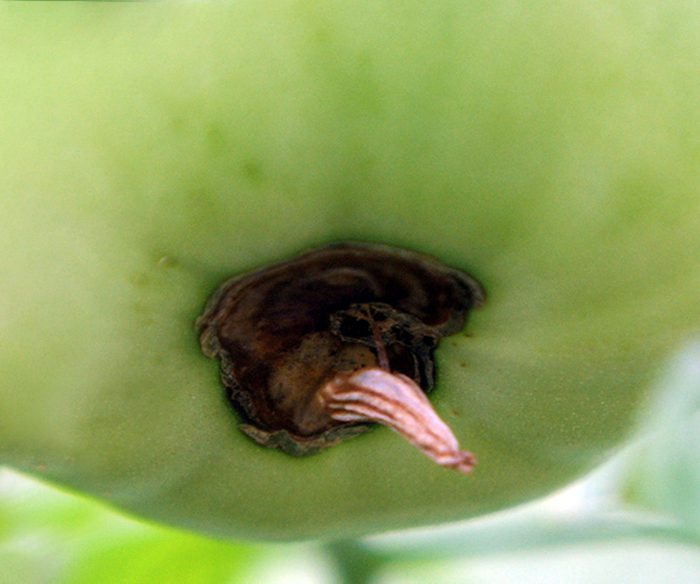
- Usually once the watering is corrected the plant grows out of blossom end rot and you don’t have to worry about it on future fruit.
- Yellowing Leaves – If you only see a few, and they are the oldest leaves, it might just be the result of the heat and the plant drying out in July. But if the entire plant is turning yellow, it might be over-watering.
- If the yellowing is on the lower branches, and there are also spots on the leaves, it’s most likely the beginning of early blight. Remove any spotted and yellowing leaves and destroy them. Start spraying with Revitalize once a week to slow the progression of the blight. Only water in the morning, especially if you’re using a sprinkler, and don’t water daily because the constant splashing of water on the leaves will make the blight spread faster.
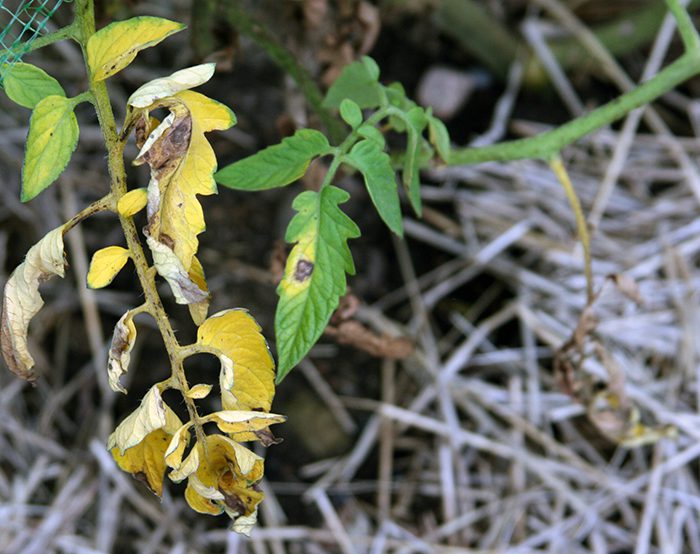
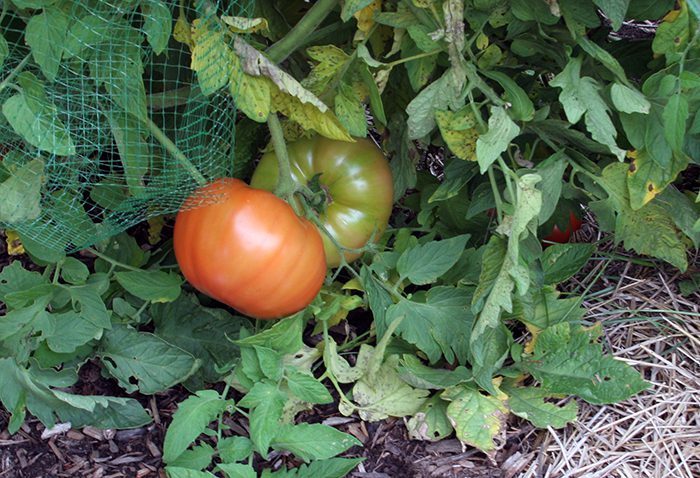
- Tomato Horn Worm – You say the foliage near the top of your plants is being eaten? You see what looks like black pepper on some of the leaves? You’ve got a tomato hornworm. Look closely to find them, since they blend in with the stems or bottoms of leaves. Pick them off and put them on your bird feeder for the crows. But if you see what looks like white rice on the worm, leave it alone. Those white attachments are the eggs of a parasite that helps control this pest, so leave the hornworm with the parasitic wasp eggs on your plants so that more of the parasites will fill the garden.

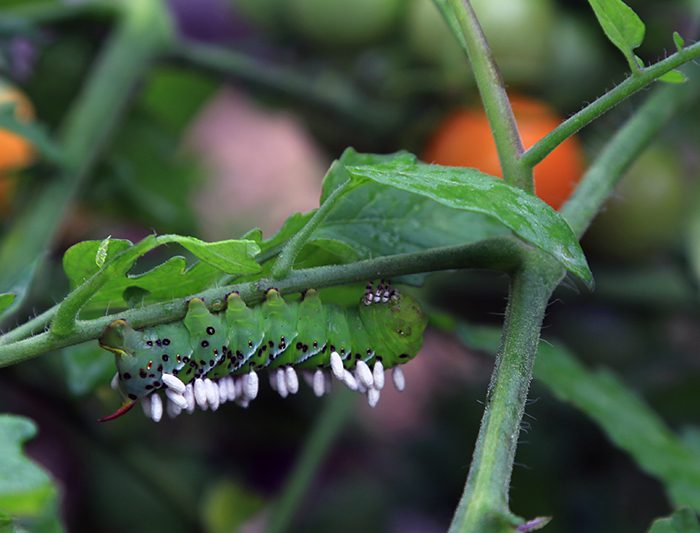
- Birds, Chipmunks and Squirrels, oh my! It’s frustrating when the first fruits are pecked or partly eaten by critters. There’s no foolproof way to prevent this. Put up barriers or hanging items to scare them or use the Scarecrow motion-activated sprinkler. Since some critters eat tomatoes because they are thirsty, try putting saucers of fresh water near but outside of the garden, and refresh it daily.
- Cracking or Splitting Fruit – As tomatoes mature, their skins toughen. If there is a sudden influx of water from either irrigation or a heavy rain, they will split. If rain is forecast, harvest those tomatoes that are ripe or nearly ripe before the storm. Keep beds evenly moist with deep soakings to keep the plants from splitting from moisture fluctuations.
- Heavy Fruit – As the tomatoes ripen you might have to tie up the stems so they don’t break off the plant.
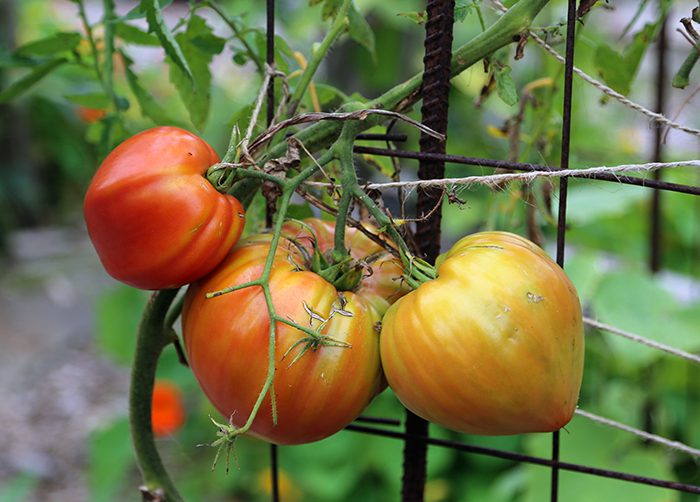
- Too Many Tomatoes All At Once! This is the best problem to have. Share with your neighbors and eat fresh tomatoes for breakfast lunch and dinner. Make tomato sauce and can or freeze it. Enjoy!
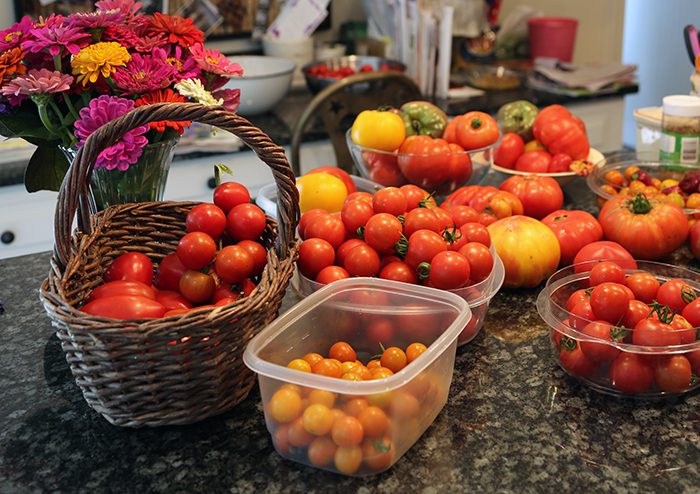
Posted in Uncategorized
Subscribe To Our Newsletter
Sign up for our weekly email about sales and events.
